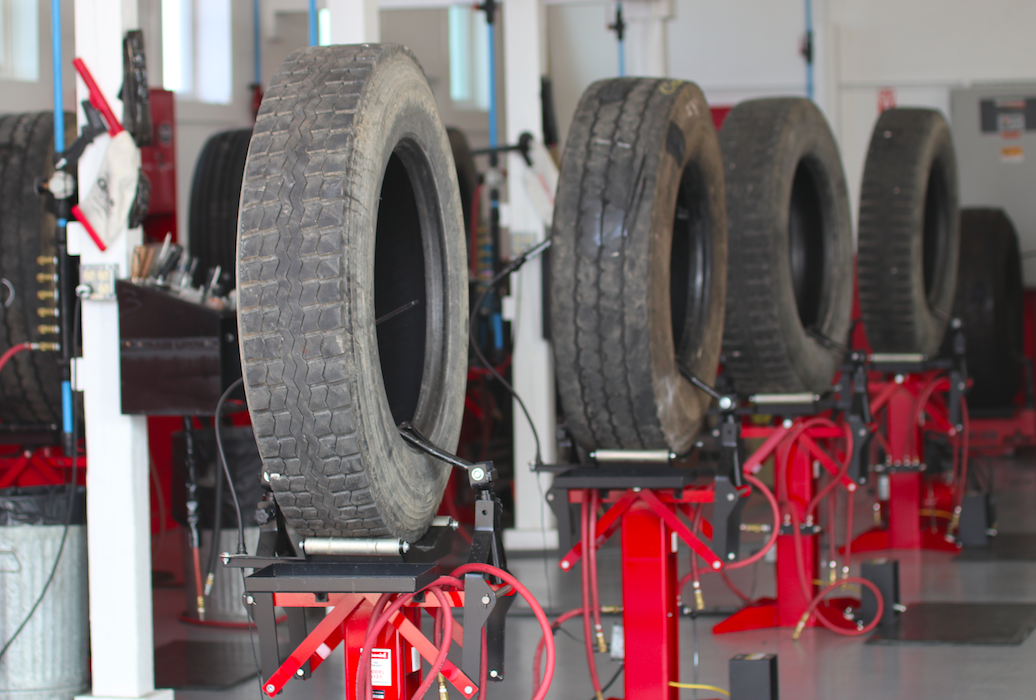Morris Tire: Your Neighborhood Tire Specialists
Wiki Article
Expert Guide to Tire Repair Work: Every Little Thing You Need to Know
In this thorough guide, we will certainly unwind the intricacies of tire repair, dropping light on the different types of repair sets available and offering valuable understandings right into when it might be time to bid goodbye to a damaged tire. Remain tuned as we delve much deeper into the subtleties of tire maintenance, outfitting you with the crucial know-how to ensure your tires stand the examination of time.Typical Reasons For Tire Damages
What are the usual reasons that cause tire damage, affecting lorry efficiency and safety? Tire damages can occur due to numerous aspects, with one of the primary reasons being incorrect rising cost of living pressure. Under-inflated tires can trigger excessive warm buildup, bring about raised wear and prospective blowouts. On the other hand, over-inflated tires can lead to decreased traction, uneven wear, and a harsher ride.
An additional common reason for tire damage is inadequate walk deepness. Worn-out treads can endanger hold on the road, especially in damp or slippery conditions, enhancing the risk of mishaps. Furthermore, driving over potholes, debris, or sharp objects can pierce or trigger cuts in the tire, weakening its structure and possibly causing a level.
Additionally, incorrect wheel placement and unbalanced tires can also add to tire damage. Misaligned wheels can lead to uneven wear patterns, while unbalanced tires can cause resonances, influencing both the vehicle's handling and the tire's long life. Routine maintenance checks and prompt repairs can help reduce these common reasons for tire damages, ensuring optimum car performance and security.
Sorts Of Tire Repair Kits
To resolve the after-effects of common root causes of tire damage discussed earlier, it is crucial to recognize the various sorts of tire repair packages offered for automobile proprietors. There are mostly 3 sorts of tire repair packages typically utilized: plug kits, spot sets, and mix fixing sets.Plug kits are a fast and easy remedy for repairing small leaks triggered by nails or screws. They include a T-handle device and rubber plugs that can be put right into the puncture to secure the opening successfully. Patch sets, on the other hand, are more suitable for larger slits or cuts in the tire. These kits consist morris tire of a patch and glue material that is related to the inner cellular lining of the tire to cover the broken area safely.
Combination repair kits use the benefit of including both plug and spot components, giving a thorough solution for a variety of tire damage situations. It is very important for vehicle proprietors to familiarize themselves with these various kinds of tire repair work kits to be gotten ready for any type of unanticipated tire issues when driving.

Actions to Repair a Tire Puncture
Fixing a tire slit calls for an organized technique and the right devices to guarantee a secure and efficient option. When encountered with a punctured tire, the first action is to safely draw over to a level, stable surface away from website traffic. Engage the car park brake and place wheel chocks behind the tires to prevent any kind of unexpected rolling. Next off, remove the punctured tire complying with the lorry supplier's guidelines. Once the tire is removed, inspect the punctured area to find the international object triggering the leak. Utilize a reaming device to tidy and roughen the leak opening for much better adhesion. Apply rubber concrete to the location and insert a plug using a plug insertion device. Trim any kind of excess plug material flush with the tire tread. Reinflate the tire to the recommended stress and reinstall it onto the vehicle. Conduct a complete leakage check utilizing soapy water to guarantee the leak is effectively sealed before resuming normal driving.When to Change a Tire
Identifying the proper time for tire substitute requires a detailed assessment of numerous vital factors related to tire wear and safety. As tires wear down, the depth of the tread declines, influencing the tire's grasp on the roadway. Also if the walk depth appears sufficient, tires older than six years need to be carefully examined, as the rubber can deteriorate over time, making the tire more prone to failing.
Tire Maintenance Tips for Longevity
After examining essential elements connected to tire wear and safety and security, executing proper tire upkeep practices is essential for maximizing the long life of your tires. Frequently examining tire pressure is crucial, as underinflated tires can lead to enhanced wear and reduced gas efficiency.Revolving your tires at regular intervals, commonly every 5,000 to 7,000 miles, advertises even walk wear throughout all tires. This technique extends the life of your tires and guarantees optimum efficiency. Inspecting tires for indications of damage, such as cuts, bulges, or punctures, is likewise critical for keeping tire longevity. Finally, driving routines play a substantial duty in tire wear. Preventing abrupt quits, doglegs, and excessive speeding can help preserve your tires and enhance safety when driving. By following these tire upkeep ideas, you can maximize the lifespan of your tires and ensure a smooth driving experience (discount tires morris il).
Final Thought
To conclude, understanding common root causes of tire damages, utilizing the proper tire repair service sets, complying with proper actions to repair a tire puncture, understanding when to replace a tire, and implementing tire upkeep ideas are important for taking full advantage of the longevity of your tires. By remaining informed and aggressive in addressing tire concerns, you can make sure safety when driving and prolong the life-span of your tires.Report this wiki page